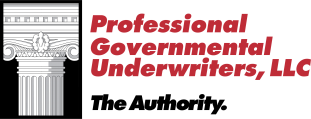Avoid These Missteps When Growing a Charter School

Essential Coverages Municipalities Should Carry
January 11, 2022
How Can Educators Avoid Litigation?
January 25, 2022Avoid These Missteps When Growing a Charter School
It’s estimated that there are almost 7,500 charter schools throughout the U.S. This number might not seem impressive, but it marks a trajectory of rapid expansion from the 2000/2001 school year, when just under 2,000 of these schools existed. This burst of growth has been met with both celebration and critique, as some laud charter schools’ academic excellence and others object to their use of resources. As charter schools continue to grow, it’s more important than ever to avoid critical missteps that could jeopardize the school’s success. Leaders should be wary of the following four potential pitfalls.
Failure to Understand Charter
An institution that’s named after its own charter should, of course, be committed to the terms of this contract. Surprisingly, though, many charter school boards are not as familiar with the charter as they should be. It’s essential that every board member be familiar with the promises, expectations, and methods that are outlined in the charter — and more importantly, it’s vital that a charter actually clearly these elements. If a school’s leadership isn’t united in pursuit of the clearly defined objectives, growth efforts are unlikely to be successful.
Lack of Academic Oversight
Too often, a charter school’s board of directors is comprised primarily of educators, with few spots occupied by those with management experience. This can lead to a lack of executive leadership amongst members as well as insufficient oversight over the school’s academic programs. All members of the board — whether they are educators or not — must be in agreement regarding the standards for academic achievement. Furthermore, a plan must be in place to ensure that these standards are met.
Not Enough Board Members
It’s vital to have a mixture of educator and non-educator board members leading a charter school, but variety isn’t the only important component of a successful board of directors. In many cases, a charter school may simply have too few members of the board, which can be crippling when attempting to expand operations and pursue growth opportunities. Founding boards often have between five and seven members, but as a charter school grows, its board should grow, too. A board that has between 11 and 15 members will be best equipped to take on the challenges of growth.
Insufficient Fundraising Efforts
Though charter schools are publicly funded, they often reply on supplemental funds from outside sources, too, in order to finance essential resources and expansion. Unfortunately, though, many charter schools do not devote the time, effort, and strategy to fundraising that’s necessary to success. This can lead to delayed achievement of goals. It’s essential that charter schools invest in proven fundraising strategies to pool the resources that are needed to enable continuous growth and expansion.
About PGUI
Professional Governmental Underwriters, LLC., is a full-service risk management company dedicated to assisting public, educational and non-profit entities in the management of their professional liability exposures including educators liability insurance. We are dedicated to providing state-of-the-art professional underwriting management and loss control advisory services on behalf of our designated carriers. For more information, call us toll-free at (800) 586-6502.


